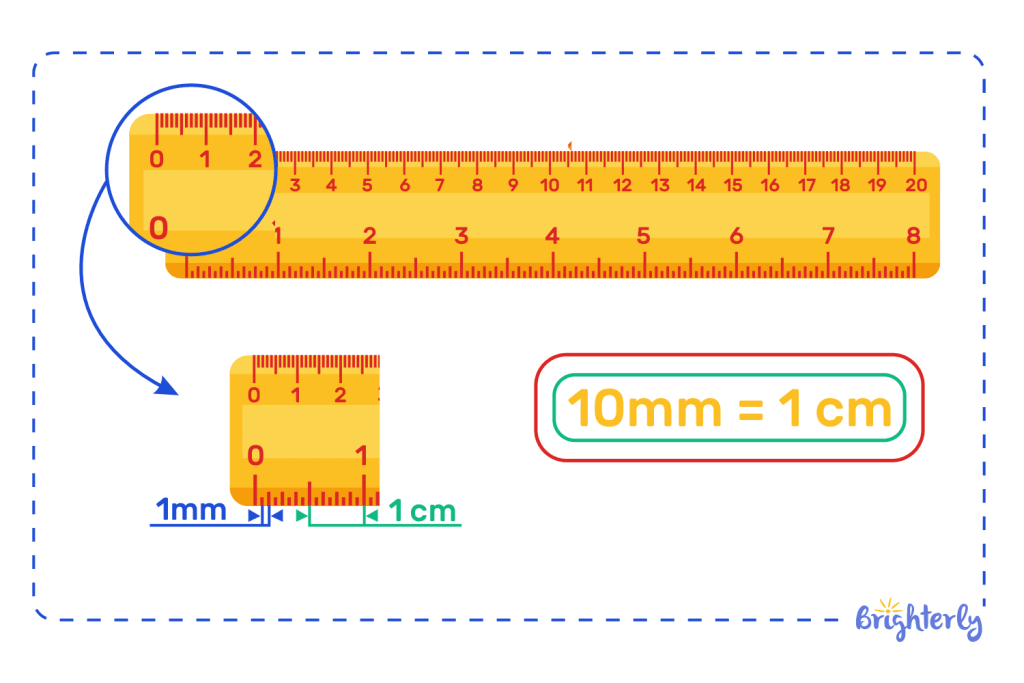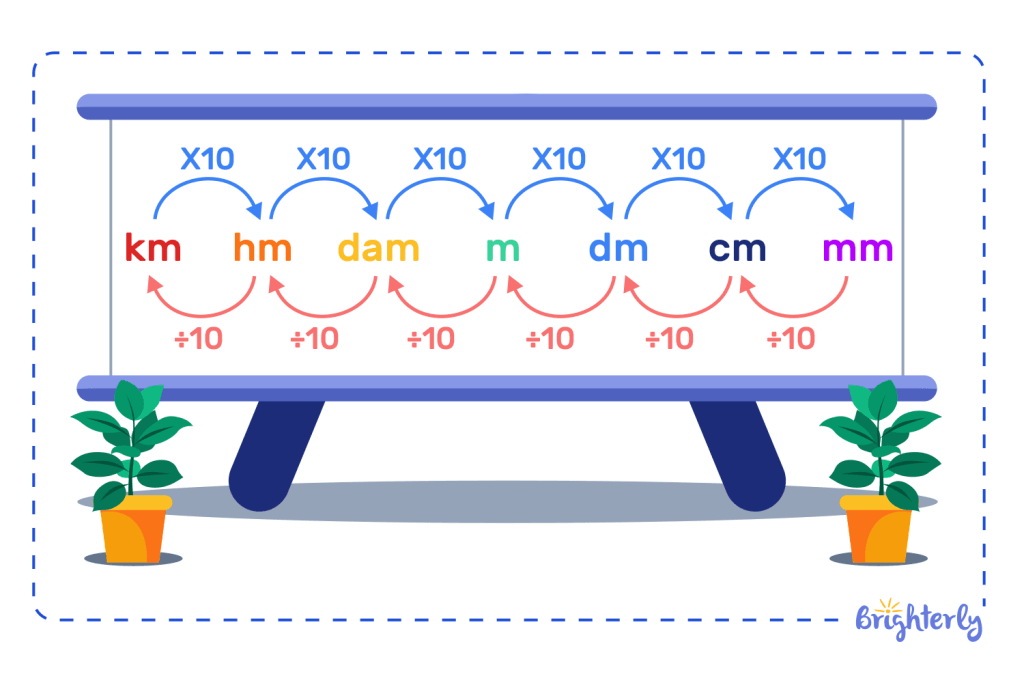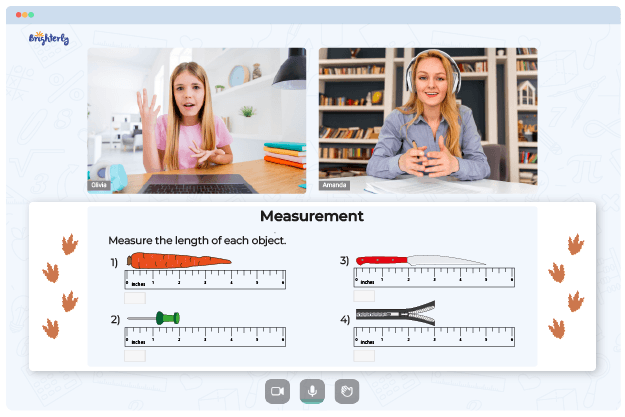Millimeter
reviewed by Jessica Kaminski
Updated on October 30, 2025
Today, we’re going to explore the notion of “millimeter”. So, what is a mm in fact? Well, this is the unit of length measurement that will come in handy as you go through life and school. It’s a small unit, meaning it’s commonly used to measure small or short objects.
This knowledge piece covers what are millimeters, how to measure them, and some common conversions. It also shares solved math problems and practice questions so you can test yourself.
What is a millimeter?
A millimeter (mm) is a unit of measurement. It forms part of the metric system and, although this isn’t the dominant system in the US, you’ll likely use mm units a lot. We commonly measure items that are small but still visible to the human eye in millimeters if they are smaller than common measurements like the inch. For example, you might measure the width of a book or paperclip in millimeters.

Convert millimeters to centimeters
It’s easy to convert millimeters to centimeters. That’s because millimeters actually make up centimeters! Every centimeter contains 10 millimeters, so to convert millimeters to centimeters, you simply divide by 10.
Mm to cm formula
The mm to cm formula is mm ÷ 10 = cm.
Now, to take an exact example of millimeter conversion, let’s work with 35mm. You have to divide the number by 10:
35mm ÷ 10 = 3.5cm.
Convert millimeters to inches
Converting millimeters to inches is a little more complicated, because they’re part of different systems. Inches are part of the imperial system, so they don’t directly correlate with millimeters. However, it’s doable!
There are 25.4 millimeters in an inch, so divide your millimeters by 25.4 to get your inches.
Mm to inch formula
The mm to inch formula is mm ÷ 25.4 = inches.
For example, if you have 508mm, your formula would be:
508mm ÷ 25.4 = 20in.
Convert millimeter to meter
Millimeters are in the same system as meters, so this conversion is easy. There are 1000 millimeters in a meter, so to convert your millimeters to meters, divide them by 1000.
Mm to m formula
The mm to m formula is mm ÷ 1000 = m.
So if you have 4500mm, your formula would be:
4500 .mm ÷ 1000 = 4.5m.
Millimeter and other units of length
The millimeter is just one of many units of length, and the metric system it sits under is just one system of measurement. So, it’s always useful to know about the place of milimeter in the many systems of measurement.
Millimeter and metric units
The mm unit is part of the metric system, which covers many other units of length, including the centimeter and meter. In the metric system each millimeter equals one-tenth of a centimeter and one-thousandth of a meter, making it a small unit of measurement.
However, it’s still bigger than a micrometer (one-thousandth of a millimeter) and a nanometer (one-millionth of a millimeter). These units share a base-10 relationship, so they’re easy to work with together.

Millimeter and other customary units
Because they’re part of different systems, there’s no customary (i.e., imperial) equivalent to the millimeter. The closest customary unit is the inch, which is 25.4 millimeters. Other measurements in the imperial system include the foot (304.8mm) and yard (914.4mm).
Solved examples on millimeters
Now is the time to dig into some solved examples on millimeters. They will help you understand how to solve these types of millimeter example questions.
Solved math task 1
You have an action figure that is 4 inches tall. How tall is it in mm?
Answer
| 101.6mm. |
To work this out, just multiply the height in inches (4) by 25.4 (the number of millimeters in an inch). 4 x 25.4mm = 101.6.
Solved math task 2
You get two footlong sandwiches from your favorite food place. How long are they combined in mm?
Answer
| 609.6mm. |
A foot is 304.8mm, so multiply this by 2 for your answer. 304.8mm x 2 = 609.6.
Solved math task 3
You are 1.2 meters tall. How tall are you in millimeters?
Answer
| 1200mm. |
A meter is 1000 millimeters, so multiply your height in meters by 1000.
1000mm x 1.2 = 1200mm.
Practice problems on a millimeter
Ready to try some questions out for yourself? Take on these puzzles now:
- Your school pencil is 10cm long. How long is this in millimeters?
- Your math workbook is 7 inches long. How long is it in millimeters?
- You have two toy cars: one is 5cm tall and one is 8cm tall. How tall are they, combined, in millimeters?
Conclusion
Now you know everything necessary about the millimeter! Thus, you have an answer to “What is millimeters?”. Plus, using this unit from the metric system will help you measure smaller items and convert between metric and imperial units.
Frequently asked questions on millimeter
What is mm in measurement?
Mm in measurement is a unit of length. It is a small measurement and is part of the metric system. It’s equivalent to 0.393701 inches, 0.1 centimeters, and 0.001 meters.
How many millimeters are there in an inch?
There are 25.4mm in an inch. This makes the millimeter a smaller unit of measurement. It’s a great way to measure items smaller than an inch!
How to convert millimeters to meters?
To convert millimeters to meters, you divide your measurement in millimeters by 1000. That’s because a millimeter is one-thousandth of a meter. For example, if you have a measurement of 4000 millimeters, that would be 4 meters.
What are millimeters used to measure?
Millimeters are used to measure small objects. For example, you could measure erasers, book thicknesses, paperclips, or small toys in mm to get an accurate measurement. Some things that are a millimeter long include beads, gemstones, a sewing needle, or the tip of a pencil.






